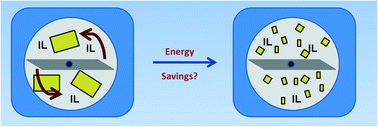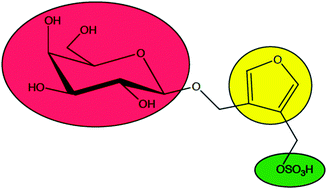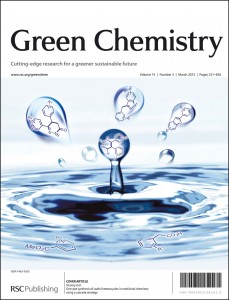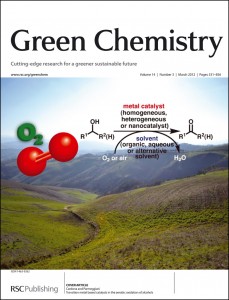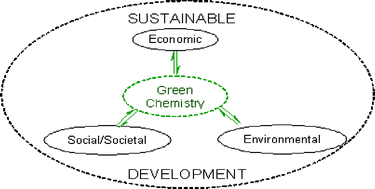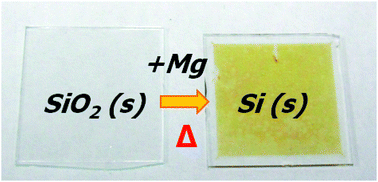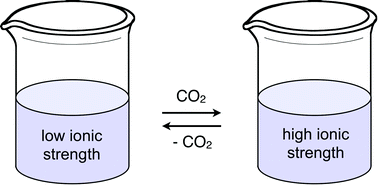
Image courtesy of Shutterstock
The development of green and sustainable chemistry is one of the most topical issues of today and is relevant across all areas of chemistry in academia and industry.
Chemical Society Reviews (Chem Soc Rev), Green Chemistry and Energy & Environmental Science (EES) are delighted to present a combined collection of high quality reviews covering a broad range of topics from this field. The collection includes reviews currently featured in Chem Soc Rev’s Green Chemistry themed issue (online now), as well as a selection of cutting edge reviews published in Green Chemistry and EES last year.
All these articles are free to access for a limited time only, so make the most of this opportunity and take a look…
Fundamentals of green chemistry: efficiency in reaction design, Roger Sheldon, Chem. Soc. Rev., 2012, 41, 1437.
Evaluating the “Greenness” of chemical processes and products in the pharmaceutical industry—a green metrics primer, Concepción Jiménez-González et al., Chem. Soc. Rev., 2012, 41, 1485.
Searching for green solvents, Philip, G. Jessop, Green Chem., 2011, 13, 1391.
Derivation and synthesis of renewable surfactants, Evan S. Beach et al., Chem. Soc. Rev., 2012, 41, 1499.
Industrial biotechnology―the future of green chemistry?, Udo Kragl et al., Green Chem., 2011, 13, 3007.
Expanding the organic toolbox: a guide to integrating biocatalysis in synthesis, Christopher M. Clouthier and Joelle Pelletier, Chem. Soc. Rev., 2012, 41, 1585.
Enzyme immobilization on/in polymeric membranes: status, challenges and perspectives in biocatalytic membrane reactors (BMRs), Yamini Satyawali et al., Green Chem., 2011, 13, 1609.
Immobilization technology: a sustainable solution for biofuel cell design, Xiao-Yu Yang et al., Energy Environ. Sci., 2012, 5, 5540-5563
Green chemistry oriented organic synthesis in water, Marc-Olivier Simon and Chao-Jun Li, Chem. Soc. Rev., 2012, 41, 1415.
Fischer–Tropsch fuels refinery design, Arno de Klerk, Energy Environ. Sci., 2011, 4, 1177.
The importance of green chemistry in process research and development, Peter J. Dunn, Chem. Soc. Rev., 2012, 41, 1452.
Alternative energy input: mechanochemical, microwave and ultrasound-assisted organic synthesis, R. B. Nasir Baig and Rajender S. Varma, Chem. Soc. Rev., 2012, 41, 1559.

Image courtesy of Shutterstock
Ionic liquid processing of cellulose, Robin D. Rogers et al., Chem. Soc. Rev., 2012, 41, 1519.
Processing of metals and metal oxides using ionic liquids, Andrew P. Abbott et al., Green Chem., 2011, 13, 471.
Continuous reactions in supercritical carbon dioxide: problems, solutions and possible ways forward, Xue Han and Martyn Poliakoff, Chem. Soc. Rev., 2012, 41, 1428.
Green materials synthesis with supercritical water, Tadafumi Adschiri et al., Green Chem., 2011, 13, 1380.
Multiple objectives in biofuels sustainability policy, Jon C. Lovett et al., Energy Environ. Sci., 2011, 4, 261.
Conversion of biomass to selected chemical products, Pierre Gallezot, Chem. Soc. Rev., 2012, 41, 1538.
Toward a rational control of solid acid catalysis for green synthesis and biomass conversion, Ken-ichi Shimizu and Atsushi Satsuma, Energy Environ. Sci., 2011, 4, 3140-3153
Waste materials―catalytic opportunities: an overview of the application of large scale waste materials as resources for catalytic applications, J. S. J. Hargreaves et al., Green Chem., 2011, 13, 16.
Recent advances in the recycling of homogeneous catalysts using membrane separation, Dieter Vogt et al., Green Chem., 2011, 13, 2247.
Cobalt catalysts for the coupling of CO2 and epoxides to provide polycarbonates and cyclic carbonates, Xiao-Bing Lu and Donald J. Darensbourg, Chem. Soc. Rev., 2012, 41, 1462.
Keep up-to-date with the latest reviews and primary research in this field by registering for our e-alerts today!
